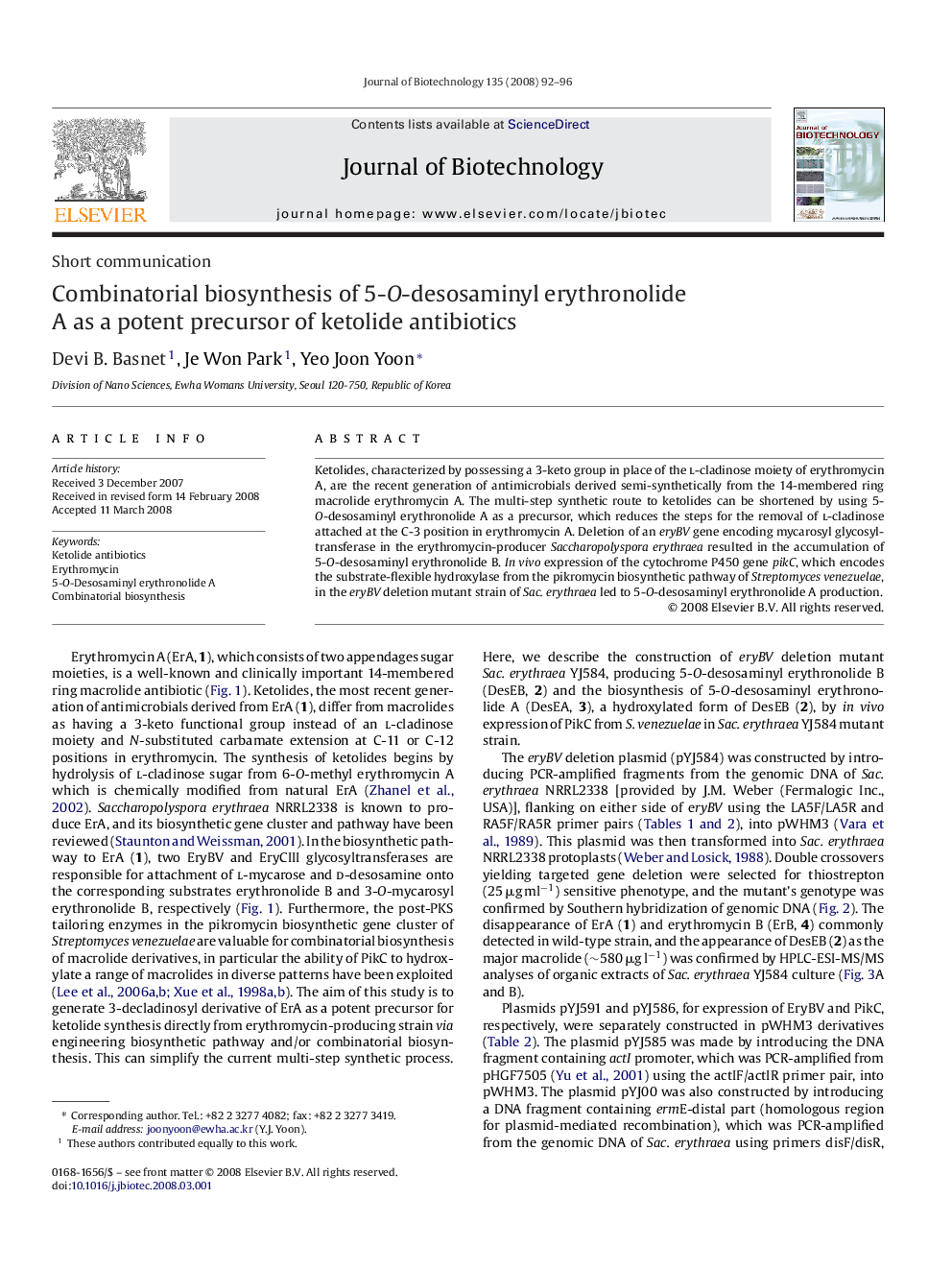| کد مقاله | کد نشریه | سال انتشار | مقاله انگلیسی | نسخه تمام متن |
|---|---|---|---|---|
| 24877 | 43542 | 2008 | 5 صفحه PDF | دانلود رایگان |

Ketolides, characterized by possessing a 3-keto group in place of the l-cladinose moiety of erythromycin A, are the recent generation of antimicrobials derived semi-synthetically from the 14-membered ring macrolide erythromycin A. The multi-step synthetic route to ketolides can be shortened by using 5-O-desosaminyl erythronolide A as a precursor, which reduces the steps for the removal of l-cladinose attached at the C-3 position in erythromycin A. Deletion of an eryBV gene encoding mycarosyl glycosyltransferase in the erythromycin-producer Saccharopolyspora erythraea resulted in the accumulation of 5-O-desosaminyl erythronolide B. In vivo expression of the cytochrome P450 gene pikC, which encodes the substrate-flexible hydroxylase from the pikromycin biosynthetic pathway of Streptomyces venezuelae, in the eryBV deletion mutant strain of Sac. erythraea led to 5-O-desosaminyl erythronolide A production.
Journal: Journal of Biotechnology - Volume 135, Issue 1, 20 May 2008, Pages 92–96